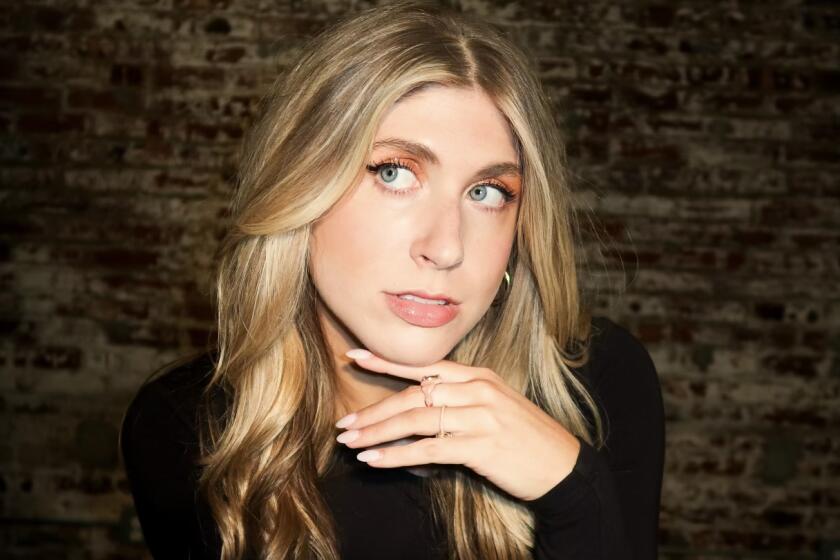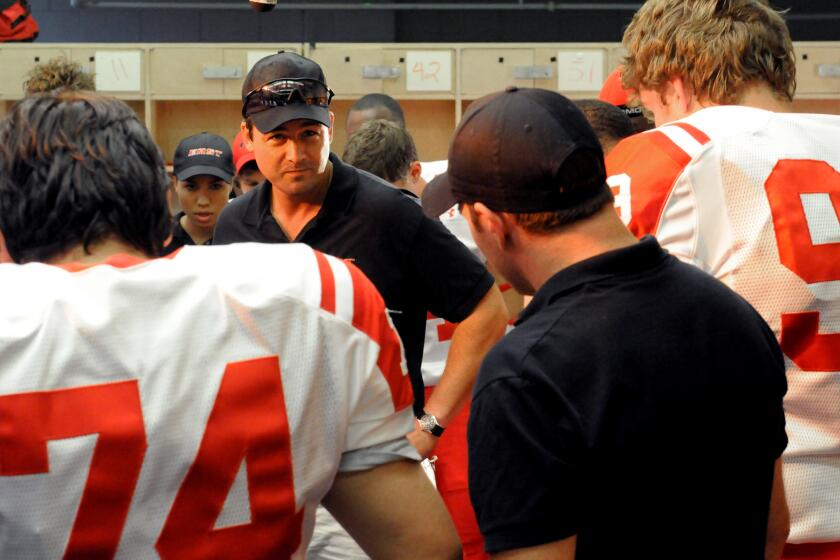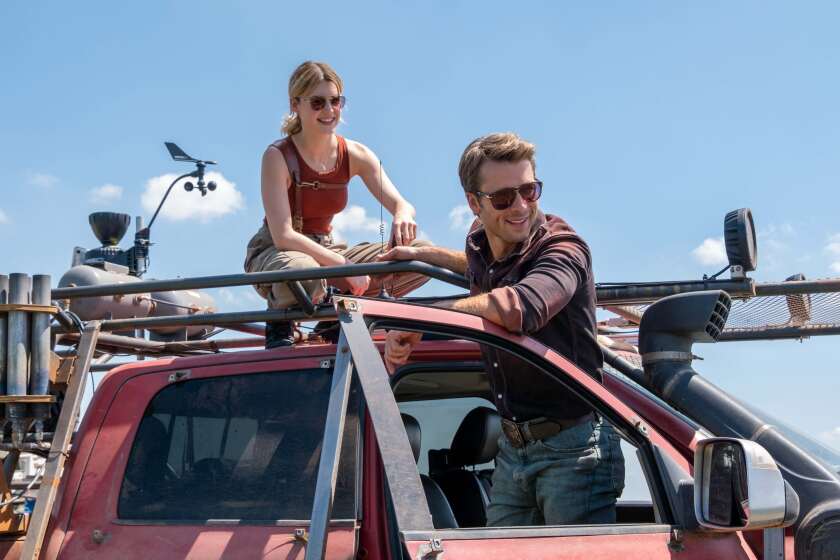Low-key drama on high
“OK,” said the woman with the streaked, tawny flip and lacy decolletage, “just tell me exactly how to get out of this place.”
She was speaking in the confident nicotine-distressed tones of an Old Hollywood agent to an usher who was attempting to direct her to her seat.
“I’m furious,” she said, clutching purse and program. “I don’t want to be like those folks in Rhode Island. So the exit’s down those main stairs and to the right?”
This year’s Oscar ceremony was a surreal but anticlimactic affair: Traffic was not that bad after all; demonstrations didn’t get out of hand; and Catherine Zeta-Jones didn’t have her baby on stage.
It was a swirling mix of old and new world orders. First, there was the punctuality issue. Nothing mobilizes Angelenos faster than the threat of traffic tie-ups, and so many of this year’s noncelebrity attendees wound up being on time or even -- gasp! -- early for the pre-show cocktails.
As early as 3 p.m. people were stepping into the weird hush of this year’s diminished arrivals area (only in L.A. would a bank of two dozen photographers and a pedestrian bridge lined with television cameras be considered no media).
They were led by some of our patrician stars -- George Kennedy, Ernest Borgnine, Mickey Rooney -- folks of an age who understand that the earlier you get there, the earlier you can sit the heck down.
For the younger set, arriving early meant more time to prowl the five levels of the Kodak Theatre trying to spot celebrities, who clearly had their own Oscar bunker somewhere.
“Well, they segregated us again,” said one woman, peering down from the Parterre into the Orchestra level, where presumably the beautiful people milled. Not that you could see much more than hyped-up cleavage and regrettable hairlines.
But guests waiting for the elevator, to go to their aerie-like seats in Mezzanine 3 before the show began, were treated to the sight of best actor winner Adrien Brody as the doors opened. The actor, understandably, began to step out only to be pulled back by members of his entourage. “No, no. That’s the second floor!” one man barked. Brody had the decency, at least, not to stare at the noncelebrities who stood immobilized, unsure how to proceed.
Since the Orchestra level was off limits to most, people busied themselves in pilgrimages to the higher levels. Conversations blurred by, leaving the listener wondering exactly what planet she’s on: “I can feel my dress just stretching out, right here as I’m standing, right here, can you see it?” “ ... and I hear they executed them, shot them in the head. Can that be possible?” “We ripped out our kitchen twice, then we sold the house, made a bundle.” “Is that Sharon Stone?”
That particular mistake, the Sharon Stone mistake, is completely understandable. Because if you mill around the Kodak long enough on Oscar night, everyone begins to look like Sharon Stone, Julie Andrews or John C. Reilly. It must be the lighting.
Twenty minutes into the show, guests were gathered at the bar buying sandwiches -- memo to the academy: How many more waiters must be threatened before you serve more food? Gathering in small knots around tables at the bars, people settled into Oscar world. Talk was less about the war and more about the festivities.
The crowds there got so large and so loud, that when Michael Moore railed against President Bush, many had to admonish their fellow revelers to be quiet so they could hear.
“This is just so nerve-racking,” said one woman. “We’re in for another long evening,” the man at the next table said.
Because as long as the exits are marked clearly, the Oscars are the Oscars no matter what.
More to Read
The biggest entertainment stories
Get our big stories about Hollywood, film, television, music, arts, culture and more right in your inbox as soon as they publish.
You may occasionally receive promotional content from the Los Angeles Times.







